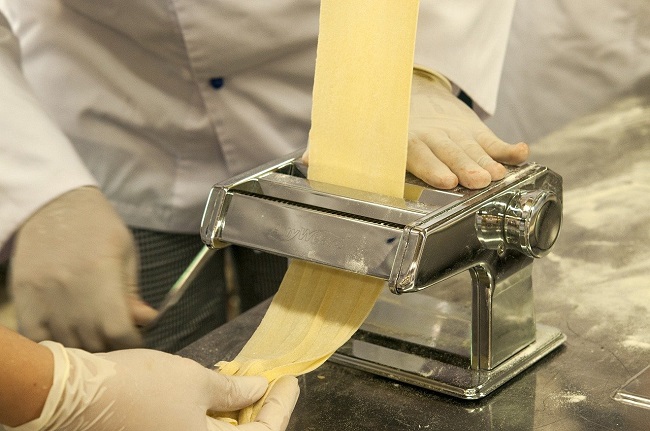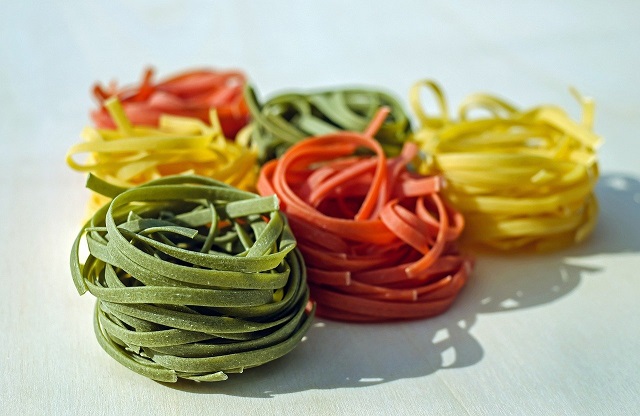The Buddha advised: “To keep the body in good health is a duty; otherwise, we shall not be able to keep our mind strong and clear.”
A growing body of research confirms that good nutrition is not optional when it comes to enjoying good health; specifically, when it comes to avoiding lifestyle diseases such as obesity. Obesity, we now realize, is a serious problem, with links to a number of physical and mental health issues.
Unfortunately, pasta has gotten a bad rap, nutritionally speaking, in the wake of the high protein/low carb craze. But to the contrary, pasta and other carbohydrates, provide an important source of energy for humans, and can even be a powerful tool to aid in weight loss. Eating pasta in moderation—even if mostly daily—has not made Italians obese. And Italians—despite a gradual decline in pasta consumption with the rise of diverse ethnic food availability—are still the largest consumers of pasta. Italians also continue to have significantly lower levels of obesity than we do here in the US. According to the Statista Global Consumer Survey, 62 percent of respondents from the U.S. say they eat pasta regularly as compared with 83 percent of Italians who claim to regularly have pasta on their daily menu. Interestingly the statistics haven’t changed much since I conducted my own cross-cultural research on US-Italy BMI decades ago:
- 80.5% of U.S. men are overweight. (Italy: 55%)
- 76.7% of U.S. women are overweight. (Italy: 40%)
- 44.2% of U.S. men are obese (Italy: 14.4%)
- 48.3% of U.S. women are obese (Italy: 13.7%)
Research continues to mount confirming the beneficial role of pasta as part of an overall healthy eating plan. For example, a large Italian study examining the traditional Mediterranean diet, in 24,325 participants found that pasta consumption was negatively associated with BMI, waist circumference, and waist-to-hip ratio, and with a lower prevalence of overweight and obesity.
Another study found that higher pasta meal intake may be significantly associated with reduced long-term risk of stroke and atherosclerotic cardiovascular disease.
In yet another study with over 84,000 subjects between 50-79 who were divided up and given the same amount of carbohydrates from different sources, pasta appeared to have a lower glycemic index(GI) as well as glycemic load (GL) compared with other major sources of carbohydrates.
All this would lead us to think that pasta is the perfect food just as is—right? What could be more wholesome than the simple 2-ingredient combination of semolina flour and water, shaped, dried, and eager to welcome a delicate plum tomato sauce, a healthful decoration of aglio e olio, or dropped into a steaming brodo with fagioli and veggies on a cold winter’s day?
So why, in the past two decades has the pasta industry been unable to leave well enough alone? Do consumers really need their pasta to be reimagined as a superhero “functional” pasta, promising the ability to lose more weight, lower cholesterol, avoid diabetes and live better than we ever could have dreamed had we just consumed the pasta asciutta we have been eating since we grew our first baby teeth? Could the nutritional value of traditional pasta really be improved by adding non-conventional ingredients to the dough?
 Some of these additions consist of “upcycled” ingredients, which would normally go to waste, such as the pulp from juicing, the oats extracted from oat milk, fish byproducts, etc. Other manufacturers are making functional pasta with “opuntia ficus indica” (aka prickly pear), of which Italy, by the way, is the second-highest producer globally. This pear cactus is said to contain a number of vitamins and minerals and may be beneficial in helping to prevent hypercholesterolemia, diabetes, obesity, arteriosclerosis, and cardiovascular disease. You may also notice the rise in “high protein” pasta made with a mixture of wheat, lentils, or pea protein. But do these new and “improved” kinds of pasta really offer significant benefits to our health?
Some of these additions consist of “upcycled” ingredients, which would normally go to waste, such as the pulp from juicing, the oats extracted from oat milk, fish byproducts, etc. Other manufacturers are making functional pasta with “opuntia ficus indica” (aka prickly pear), of which Italy, by the way, is the second-highest producer globally. This pear cactus is said to contain a number of vitamins and minerals and may be beneficial in helping to prevent hypercholesterolemia, diabetes, obesity, arteriosclerosis, and cardiovascular disease. You may also notice the rise in “high protein” pasta made with a mixture of wheat, lentils, or pea protein. But do these new and “improved” kinds of pasta really offer significant benefits to our health?
Well, yes and no. Research on the benefits of functional pasta has been mixed, and often the health impact of functional pasta has been inferred, rather than well-established. In most cases, it does no harm and there is a consumer base that these pasta products appeal to; albeit much more limited than is the demand for regular pasta. Survey data indicates that those with higher levels of education and income are the most likely consumers of novel pasta products. Traditionalists are less likely to purchase, and furthermore often insist that the wheat their pasta is made from being grown in their native Italy (the reality is, much of the wheat in the better-known, mass-produced brands import much of their wheat).
No matter which side of the pasta/functional pasta divide you fall on, there are ways to increase the nutritional value of your pasta right now and stave off weight gain at the same time.
 Here are some tips:
Here are some tips:
- Pay attention to portion sizes. Italians eat much smaller portions than we do in the US. If you take time to savor (instead of wolf down) each bite, you will hardly notice you are eating less.
- Make your own tomato sauce. Most jarred sauces contain way too much oil, sugar, and salt. You have total control over what you put in when you go back to the days when the aroma of simmering sauce fragranced the entire kitchen.
- Replace some of the pasta on your plate with vegetables and beans.
- Enjoy a fresh green salad and a piece of fruit after your pasta, to turn off the hunger switch in your brain.
Do you have more healthy pasta tips you would like to share? I’d love to know about them if you do: [email protected]





